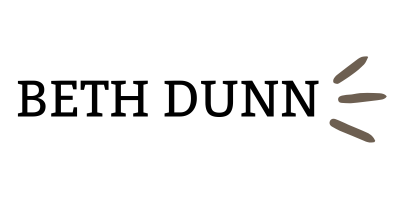
HubSpot is known for a unique and engaging brand voice. I helped define that brand voice in HubSpot's earliest days, working with a small, cross-functional team of marketers, salespeople, and product (that was me). Our main task in those days was to create a unified house style guide that would govern all content across the whole organization, inside and out. My focus was creating our first voice and tone guidelines. Once that was done (and that took a while), the challenge was how to implement it.
As the only UX writer on the product team, I was most interested in how we could ensure that all product content adhered to our style, voice, and tone guidelines. With a large and rapidly growing product team members (PMs, engineers, designers, and researchers), it was getting increasingly hard to keep an eye on it all. Most of my time was spent simply checking the grammar and spelling of language strings just before they were shipped, in between the deeper work I was increasingly doing as an embedded member of projects that needed true full stack content design.
I heard about an open source linter (Alex.js) that would check your content for insensitive, inconsiderate writing. Alex worked by using a few different rulesets to check for non-inclusive language, profanities, jargon, and cliches. I realized that we could create a ruleset just for our own style guide — and maybe even "rule-ify" our voice and tone, too.

So I recruited an engineer (the delightful Chris Freeley) to help me out. Chris worked on the basics of setting up Alex on our internal tech stack and figuring out how to attach our own rulesets and suggestions to what Alex already had. Together, we designed a web app (accessible only by HubSpotters on our VPN) that allowed you to paste in any content and get responsive feedback.

I think it was Chris who started calling it Bethbot. The name stuck. :)
The real turning point was when we set up Bethbot as a build test in Github. Any language string needed to pass the Bethbot test before it could be shipped to production. You could override Bethbot on a line-by-line basis, but in general people respected the guidance, made changes in the string before shipping, or posted a question in the Bethbot Slack channel to suggest a change to the ruleset if they felt the rule wasn't right.

Other folks across the company started asking to use Bethbot in their usual workflows, so we built a Bethbot Chrome extension, Slack integration, Sketch plugin, and interactive chatbot.

We ran a series of internal workshops across the organization, to make sure everyone knew that Bethbot existed and how it would help them create content that was consistent with the HubSpot style, voice, and tone.
These internal workshops were really the key to success. Bethbot would never have caught on with internal users as well as it did unless we'd invested in crafting these customized workshops for every team.
Here's how it worked (and for much more on this topic, see the Workshops that Work chapter in Cultivating Content Design):
1. A team asks for help.
It's not unusual for content designers to get asked by non-product teams to help make their writing more clear, compelling, and consistent with the house style guide. When that happens, rather than send them a link to our style guide and calling it a day, I'd agree to give the team a hands-on workshop. My only request is that everyone attend, including the manager, and that everyone share with me a piece of writing they're struggling with.
2. Identify the themes.
Each team tends to have its own internal dialect, including shared ways in which they routinely stray from our house style guidelines. Asking each team member in advance helps me identify what those shared habits are. Then I can customize the workshop to home in on those.
3. Customize the workshop.
The workshop will largely consist of us going over the top 5-7 rules this team needs to apply to make their work really shine. Some teams love comma splices, so we go over what they are and how to avoid them. Some need some help with title casing, and so on. We review what the rules are and how to apply them. People are usually just excited to discover that it doesn't take much to see a marked improvement in what they write.
4. Give them a composite version of their own work to edit.
This is the final exercise in the first part of the workshop, to really drive home the lessons and tips they've learned. Before the workshop begins, I take all the pieces of work they submitted and create a truly terrible composite of all their work. Clearly and blatantly violate all the rules we just went over, so they're easy to spot and correct. The key is that the piece is still recognizable as something this team would produce — for a billings team it might be an email to users whose credit card was declined. It needs to be truly relevant to their daily work. At the end of the first half, I hand out copies of this terrible-ized composite work, some red pencils, and ask them to edit the piece. Then we go over their edits together. It's a truth universally recognized that people love to find errors in other people's (but not their own) work.
5. Introduce the rest of the style guide.
Now we give them a glimpse of how many other guidelines and considerations we need to take into account when we're editing our own work. We talk about how much easier (and more fun) it is to correct other people's work than our own. And we agree that it's a lot of work to make sure that every bit of writing, everywhere, is aligned.
6. Introduce Bethbot.
And that's where Bethbot comes in. An automated editor that lives inside your browser, or docs tool, or wherever you need it to be. Without having to ask anyone else for feedback (although you should do that, too), you can get clear, consistent feedback from Bethbot about how to improve your writing and get in line with our house style, voice, and tone. How to make it accessible, inclusive and clear. How it's automatically updated whenever our style guide changes. So your writing is always polished and on point.
Once we started running these workshops — and we averaged about 2-3 team workshops per month — Bethbot caught on like wildfire. As far as I know, it's still in widespread use at HubSpot today. And the time my team saved by not having to respond to mountains of requests for ad hoc edits and content support meant that we were instead able to focus on our core mission and goal: to design and deliver clear, compelling product content that helps our users succeed.
